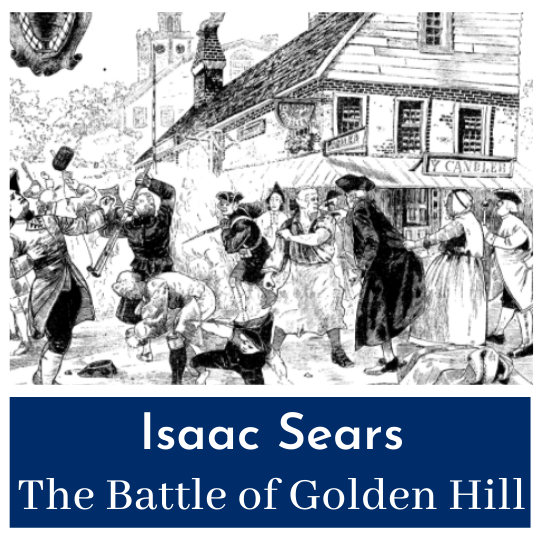Snake Oil and the Placebo Effect - Elisha Perkins' Metallic Tractor
Elisha Perkins’ metallic tractor was essentially snake oil, but he made a fortune with it during the Washington Administration.
Elisha Perkins
Elisha Perkins’ father, Joseph, was a physician who founded the Connecticut Medical Society. Following in those brilliant footsteps, Elisha trained in the family business and became a doctor himself.
When the Revolutionary War began, Perkins volunteered to serve as a Surgeon with the Continental Army and assisted the wounded during the Siege of Boston.
After the war, Elisha returned to his medical practice. However, Perkins had some unusual ideas about medicine that he began to test.
One of these ideas would make him wealthy.
One of these ideas would kill him.
Perkins’ Metallic Tractor
In the mid 1790’s, Elisha Perkins invented the ‘Metallic Tractor.’
Unlike our modern ideas of tractors, these devices consisted simply of two metal rods with a point on the end, about the size and shape of a pencil. One rod was made of brass and the other iron.
The two rods were rubbed over the skin and were said to cure gout, inflammation, back pain…the list is extraordinarily long.
By 1796, Perkins received a patent for these Metallic Tractors.
Dismissed
Elisha had his critics right away.
After all, his tractors were just two pieces of metal which were rubbed on the skin.
When Perkins’ findings were submitted to the medical field, the Connecticut Medical Society (the organization his father founded) kicked him out. Elisha’s experiments were incomplete, and his findings were not sufficient enough to prove his claims.
Success
Despite the attempts at discrediting him, Elisha was able to turn the Metallic Tractor into an extremely profitable business.
Perkins moved to Philadelphia where he was able to gain the support of many important politicians including the likes of President George Washington and Supreme Court Chief Justice Oliver Ellsworth.
Elisha used many innovative marketing tactics to sell his tractors. People from all over the nation began buying them for the home, despite a price tag which equaled several weeks of pay for average Americans.
Perkins’ son, Benjamin, joined the business and traveled to Europe where many people began buying into the hype and the instruments became an overnight success.
Curing Smallpox?
As the money came pouring in, Elisha Perkins had another idea. He believed he could cure the great scourge of 18th century America: smallpox.
Elisha’s idea was an antiseptic which consisted of vinegar, salt and water. To test his new treatment, he went into New York City during an outbreak of the disease.
Unfortunately for Perkins, the antiseptic did not work and, instead of making things better, he caught the disease himself and passed away just a month later.
John Haygarth and the Placebo Effect
A year after Perkins passed away, London Physician John Haygarth (whose work actually reduced the spread and mortality rate of smallpox) performed a study using the Metallic Tractors.
Haygarth built tractors out of wood but designed them to look identical to the ones for sale. He treated patients with these fake tractors and was shocked to see they had similar results as the originals.
After several runs of this experiment, Haygarth had proven that it wasn’t the tractors that were helping people, it was the patients’ minds believing they were being helped.
Haygarth’s study of Perkins’ tractors led to his book, On the Imagination as a Cause & as a Cure of Disorders of the Body, which was the first to explain the placebo effect as a medical condition.
While Elisha Perkins may have been a snake-oil salesman, his work led directly to a better understanding of human ailments, both physically and psychologically.
To learn about other Founders who contributed to modern medicine, try these related articles:
Dr. Benjamin Rush - The Founder of Modern Psychiatry
James Tilton Modernizes Military Medicine
Richard Bayley Survives the NYC Doctors Riots
If you’d like to read Perkins’ original publication regarding his tractors, it can be found for FREE here.
As for Haygarth’s discussion of the placebo effect, that can be read for FREE here.
Want to get fun American Revolution articles straight to your inbox every morning?
Subscribe to my email list here.
You can also support this site on Patreon by clicking here.
Although Perkins does not have a biography, Haygarth certainly does.
‘A Physician of the Enlightenment’ demonstrates how recognition of the placebo effect is just one of the many advances to medicine this brilliant man made.
If you’d like a copy for your own you can through the Amazon affiliate link below (you’ll support this site, but don’t worry, Amazon pays me while your price stays the same).






